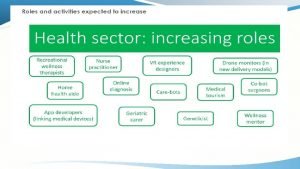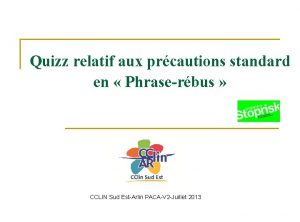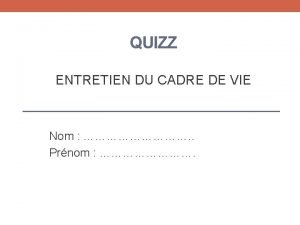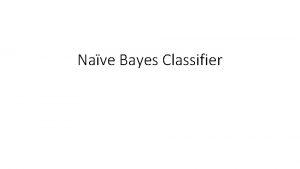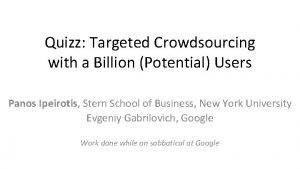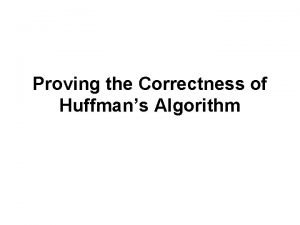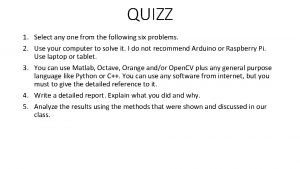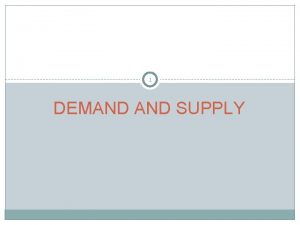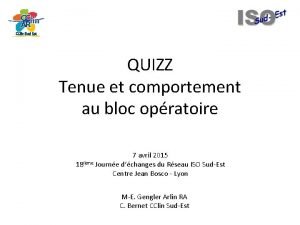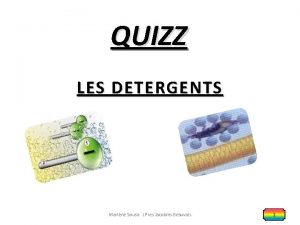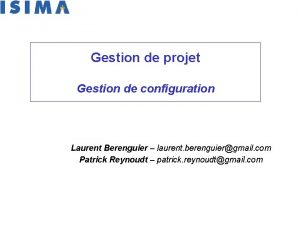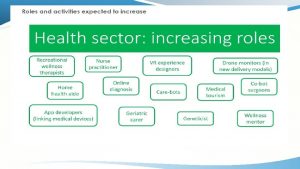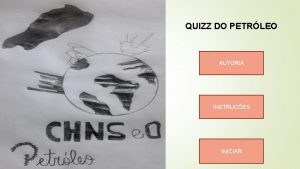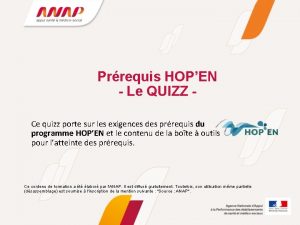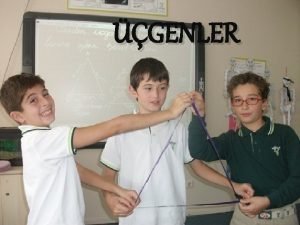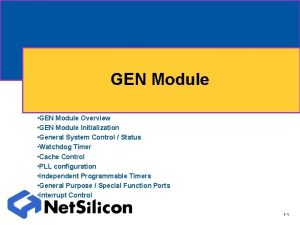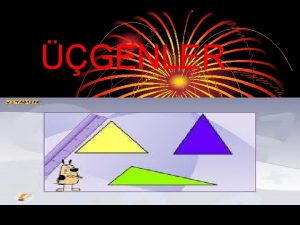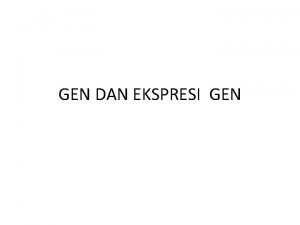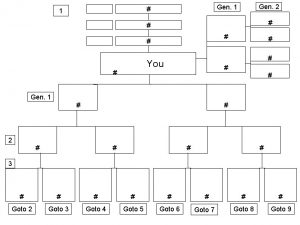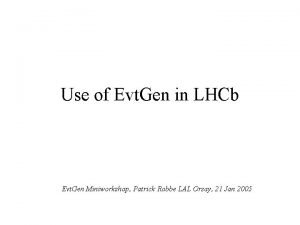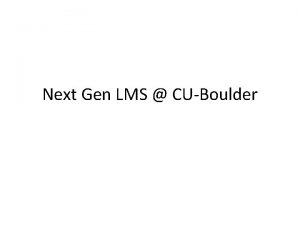THE GEN Y QUIZZ 1 What does ROTFL




















- Slides: 20









THE GEN Y QUIZZ 1. What does ROTFL stand for? 2. In Gen Y, what does a crib refer to? 3. If you were to photobomb someone, what would you be doing? 4. Have you ever “twerked”? 5. What is a Throwback Thursday? 6. What does ICYMI mean? 7. What does YOLO mean? 8. If the party was “sick” – would it be good or bad? 9. What is a bromance? 10. Who is Kimye?

Future Work Now

FUTURE WORK NOW What is driving change in the world of work? How should this affect your digital agenda?

World of Work – 6 Meta Trends Total workforce costs typically represent over 70% of an organisation’s operating expense but 86% of organisations are unaware of their total reward package CFOs and CHROs are typically spending a day a week, collaborating on strategic issues Workforce globalisation in an uncertain world 1 Shifting demographics and skills dynamics 2 42% of executives say contingent workers are changing the workforce strategy 70% of companies say they have a responsibility to automate labour as much as possible to allow staff to focus on more value added activities years 80 Four years ago, average life span used to be 79 years, now it’s 80 years. By 2036, there will be more than a one year increase in average lifespan per year Purpose led & people centred organisations and leaders 3 32% of people feel they could be more productive at work if properly incentivised 70% of jobs will disappear in the next 20 years. There will be new jobs, but it is not clear if there will be enough new jobs in such a small time 1 billion 45% By the 2040’s a single computer will be a billion times more intelligent than every human combined Business & workplace disruption & growth 4 Smarter HR technology and deeper analytics 5 3 x Of business leaders report having very little or no technology to support decision-making for talent management more likelihood of employees staying in a purpose driven organisation. They are also 1. 4 times more engaged 72% of executives said the need for globally mobile employees will increase over the next 2 -3 years Reinventing People Experience (and HR) 6 74% of Generation Z agree that business has a responsibility to create a better world 70% of today’s high performers lack critical attributes essential to their success in future roles

Deep Dive 1 – Smarter HR Technology and Deeper Analytics HR Tech is no longer a forgotten zone HR Tech Financing History: Deals And Dollars Q 1’ 11 – Q 1’ 16 *Note: HR tech funding excludes learning and educational funding 106 99 83 51 37 28 49 53 19 $446 $438 $396 13 $40 Q 1 -11 Q 2 -11 Q 3 -11 Q 4 -11 4 -15 Q 1 -16 $387 $317 $116 $145 $56 $591 $555 35 25 16 $84 35 90 84 70 67 65 $1, 145 86 $64 $54 Q 1 -12 Q 2 -12 $99 $176 $164 $174 $152 $131 Q 3 -12 Q 4 -12 HR Tech funding has grown phenomenally over the last 5 years: Q 1 -13 Q 2 -13 Q 3 -13 Q 4 -13 Dollars ($M) Deals Q 1 -14 Q 2 -14 Q 3 -14 Q 4 -14 Q 1 -15 Q 2 -15 Q 3 -15 Q www. cbinsights. com 2011 - $295 million 2016 to nearly $2. 5 billion

Deep Dive 1 – Smarter HR Technology and Deeper Analytics Every aspect of the employee lifecycle is being innovated Perform, Produce, Work & Collaborate Identify, Source, Hire & Onboard • • • Full-service pay-per-click / self-service pay-per-post • • • advertising Gamified neuroscience testing and assessment Digital, analytics-driven selection management tools AI-based self-service chat bots Virtual reality pre / post-hire learning and coaching Online short-term assignment marketplaces Online compensation and contract rate benchmarking Cloud-based applicant tracking software Cloud-based Vendor Management Systems (VMS) Robotic Process Automation (RPA) onboarding Exit • RPA of employee offboarding processes • Alumni-specific apps and social media, dedicated content and platforms/candidate referral programme • Social media and review site feedback tracking • Mobile and online exit surveys customised by employee / role • Cloud based HRIS • Digital HR plan data automation platforms • In-application Business Process as a Service (BPaa. S) • Pre-hire to retire cloud-based social talent management • Intelligent Automation expanding value add activities • Personalised consumer grade experience driven by analytics Reward, Incentives & Recognition • • • Peer-to-peer feedback and bonus awards Digital employee rewards and recognition solutions Cloud-based payroll / employee benefits platforms/ freeware Engagement and feedback tools with real-time reporting On-demand feedback requests and automatic identification of improvement areas and recommended actions • Social media with integrated reward capabilities Connected workforce management systems Mobile sales management and CRM software Social collaboration and connectivity tools Cloud-based team building and performance platforms Cloud-based mobile operational automation solutions Blended virtual and physical workspaces App and mobile-based scheduling assistants Integrated logistics and expense management tools Develop • Digitising 70 -20 -10 learning - conversational, bite-sized e-learning with AI viral coaching Self-driven role specific content Qualification recognition technology platforms Subscription, personalised, adaptive learning portals Personalised mobile career development experiences Analytics/AI – personalised consumer experience Virtual/augmented reality gaming, simulators & apps • Bite-sized EQ/engagement coaching • RPA – expanding value add • • • Culture & Employee Engagement • • Psychoanalytic-backed feedback and culture platforms Digital coaching and analytics tools Integrated and secure external social forums Platforms to enhance employee engagement through digital interactions with workplace services • Network analysis and social sensing analytics • Virtual, mobile and social collaboration tools Digital disruption is now impacting each stage of the employee lifecycle and changing both the process AND the employee experience

Deep Dive 2 – Reinventing Employee Experience (EX) 1. Customers are people 2. People are employees CX 3. Employees are customers Employees of the future want (now)… …to be protected EX World-class services Low cost/high speed Personalized services with real choice and ultimate flexibility …to be connecte d …to be informed Flexible, and expect an evolving career, working for multiple employers Purpose driven and accustomed to rapid evolution, interested in differentiated reward choices Ease of use Positioned for change, sprinting and adapting, able to explore the world for new ideas …convenienc e …to be involved Using AI, RPA & cognitive computing and want to work within “frictionless” physical and digital environments Frictionless digital experiences Immediate secure fulfillment …to be healthy …to recover … to have control Digital is changing the way we do everything If you come to expect a level of experience in one area of your life, should you expect any different in another?

Deep Dive 2 – Reinventing Employee Experience (EX) “To win in the marketplace you must first win in the workplace" Only 30% of UK employees are fully engaged in their work Collaboration tools drive inclusive cultures of innovation 94% of the world’s most admired companies said improving EX has created a competitive advantage Engaged employees generate 47% more revenue Millennials expect to interact at work in the same way as they do in their personal lives (social) 43% of highly engaged employees receive feedback at least once a week, compared to only 18% of employees with low engagement 83% of employees who work in the field don’t have an email address. But 72% of these already use a mobile device Engaged employees are 97% less likely to leave Organizations are seeking tools that amplify the employee voice Engaged employees take 4 less sick days per year than disengaged 40% of workers are actively disengaged when they get little or no feedback Supports Innovation 67% of engaged employees have +NPS vs only 3% of the disengaged EX Drives Engagement

Key Technologies - Impact of These on Work HUMAN AND MACHINE UNDERSTANDING HUMAN Technologies that reduce or speed up tasks – thereby reducing and redefining human roles and jobs Deep analytics and technologies providing new insight to predict, and manage, human fit and performance Robotic Process Automation Social Sensing Analytics and wearables Artificial Intelligence (Chat-bots) Neuroscience gamification

Key Technologies – Robotic Process Automation RPA is a catalyst for business process transformation and innovation What are the benefits of RPA? Business Examples RPA Description On-boarding; Time and Attendance; Recruitment Administration; Learning and Development; Payroll Processing; Expense Management 1 ity 2 7 Cost Effectiveness Consistency Vendor Master Data Management, Procurement Spend Integration, Scheduling and Forecasting of Supply Chain routes Supply Chain Data Aggregation for Tax Returns, Reconciliations, Indirect and Direct Tax Calculations and Submissions to Revenue Services Taxation 3 Productivity di t. T an 4 m 5 hu ra il e or M 6 Au Accounts Receivable, Accounts Payable, Finance Reconciliations, Regulatory Reporting, Payroll Processing Finance Se cu r cy ra cu Ac 8 Scalability HR Regulations and Control, Anti-Money Laundering Dynamic Monitoring of Transactions, KYC Remediation, Example - What can RPA do Sanction for HR Compliance, Payment Screening 80 % Frontline Operations 93 % 65 % 57 % Customer Interactions, Integration between Mobile + Applications and Core Systems, Product Development of HR rulesbased processes can be automated of HR Operations Employees’ time spent on repetitive tasks of savings compared to an offshore based FTEs Shared Service Centre of companies considering HR technology change

Key Technologies - Artificial Intelligence (AI) AI, Chat-bots and their applications The theory and development of computer systems able to perform tasks normally requiring human intelligence, such as visual perception, speech recognition, decision-making and translation between languages Commercial forms of AI: Example of AI in business: What is a chat-bot? • Personal assistants (Siri, Alexa, Google Now, Cortana, Jibo) • Automated vehicles (Google, Tesla, Otto, Daimler, Volvo) • Unmanned Aerial Vehicles (Drone planes) • Sales (Amazon Machine Learning, Aerosolve) • Scheduling assistants (x. ai, Clara) • Decision making (Watson, Cycorp) • Recruitment (Talent. Bin, Juji, Mya) • Customer service (Amelia) • Logistics Booking (30 seconds to fly, Skyscanner Business) • Expenses Management (Appzen, acebot) Definition: A chat-bot is a service, powered by rules and sometimes artificial intelligence, that can interact with humans via an online chat interface. The service could be any number of things, ranging from functional to fun, and it could live in any major chat product (Facebook Messenger, Slack, Telegram, Text Messages, etc. ). With Natural Language Processing (NLP) more advanced than ever, the user experience has been transformed and chatbots are being used across multiple industries from a customer service standpoint.

Key Technologies – Social Sensing Analytics Meet Ben. He wants to get to know you (much) better… • Ben Waber is President and CEO of Humanyze, a behavioral analytics and social sensing company backed by VC that specialises in MIT start ups. • He has a PHD from MIT in Human Dynamics, is a visiting scientist at MIT Media Lab and was a senior researcher in the Harvard Business School Organisational Behaviour group Ben literally wrote the book on People Analytics and his work focuses on using real time data flows to rethink management of people, physical architecture, corporate planning, and training
 Quizz
Quizz Quizz nettoyage désinfection
Quizz nettoyage désinfection Quizz produits d'entretien
Quizz produits d'entretien Quizz
Quizz Quizz
Quizz Exercice entretien du linge
Exercice entretien du linge Quizz btp
Quizz btp Quizz
Quizz Cheveux permanente directionnelle
Cheveux permanente directionnelle Quizz informatique
Quizz informatique Quizz
Quizz Quizz
Quizz Quizz identitovigilance
Quizz identitovigilance Quizz
Quizz Tenue bloc opératoire recommandation
Tenue bloc opératoire recommandation Enroulage permanente directionnelle
Enroulage permanente directionnelle Quizz
Quizz Gestion de configuration documentaire
Gestion de configuration documentaire Quizz
Quizz Handicapped introduction
Handicapped introduction Quizz sex
Quizz sex
